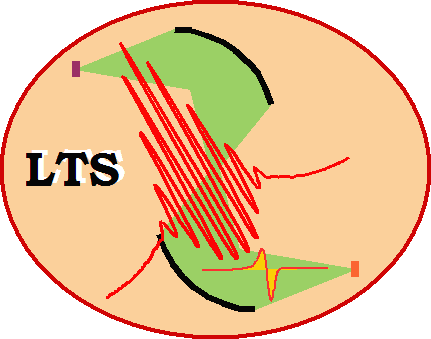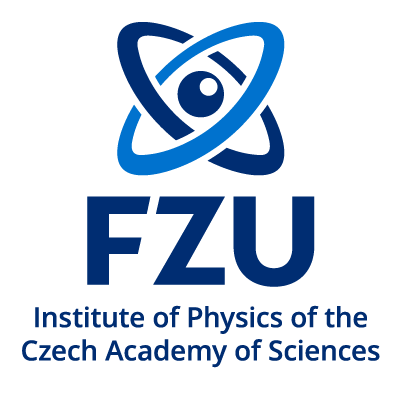Research – terahertz microscopy
Soon after the introduction of the THz time-domain spectroscopy, the technique was used for object imaging. As in other parts of the electromagnetic spectrum, the spatial resolution is limited by the wavelength, unless a near-field approach is adopted. In the THz range, essentially two groups of near-field methods were used up to recently: one making use of sub-wavelength apertures, and one using sharp tips which scatter the THz radiation. In both cases, the resolution is directly linked to the size of the imaging tool; however, only a small fraction of the incident radiation contributes to the THz image.

Fig. 1 Sketch of the near-field antenna used in our sub-wavelength imaging experiments. The cross-section of the straight part is typically 1 mm × 2 mm and the size of the end facet determines the spatial resolution (currently, a size of about 20 µm × 20 µm has been achieved).
Recently, we have developed and tested a different approach to sub-wavelength THz imaging [1–3], making use of a near-field antenna depicted in Fig. 1. It consists of a block of low-loss dielectric with a straight part acting as a usual waveguide, and a pyramid-shaped tip, where the guided modes are transformed into capacitor-like modes owing to a selective metallization of two skewed faces of the tip only. The sample is put into contact with the end facet, and the reflection of the THz wave at the tip is influenced by the sample material in the closest vicinity of the end facet. With this concept, about 10 % of the incident power could be used for imaging. Currently we are building a dedicated imaging setup and also a higher resolution should be achieved.

Fig. 2
Scheme of the setup for THz near-field imaging.
Related publications
| [1] | M. Berta and F. Kadlec, Near-field terahertz imaging of ferroelectric domains in barium titanate, Phase Transitions 83, 985 (2010).  |
|---|---|
| [2] | M. Berta, P. Kužel, and F. Kadlec, Study of responsiveness of near-field terahertz imaging probes, J. Phys. D 42, 155501 (2009).  |
| [3] | N. Klein, P. Lahl, U. Poppe, F. Kadlec, and P. Kužel, A metal-dielectric antenna for terahertz near-field imaging, J. Appl. Phys. 98, 014910 (2005).  |
| last change December 13, 2018 | (home page) |
|---|

